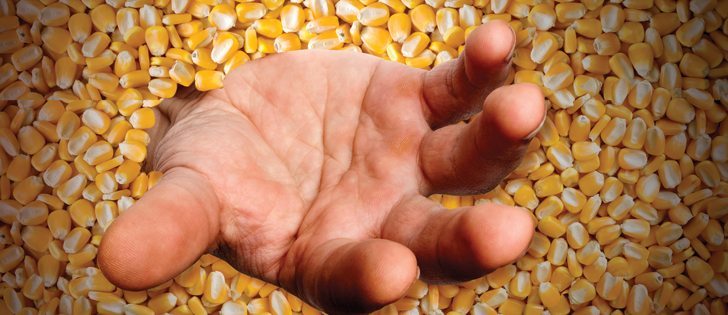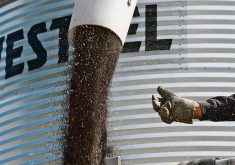RIDGETOWN, Ont. — “Get her done” is a mantra long familiar to Arick Baker. It’s also what led to the young Iowa farmer spending four and a half hours buried in a grain bin one summer day in 2013.
“If we would have stopped and thought it through, this wouldn’t have happened,” Baker told the Southwest Agriculture Conference Jan. 5.
“Today, I don’t like to take risks. If there’s a way to do things where there’s no risk, that’s the way to go.”
Read Also

Know what costs are involved in keeping crops in the bin
When you’re looking at full bins and rising calf prices, the human reflex is to hold on and hope for more. That’s not a plan. It’s a bet. Storage has a price tag.
His ordeal began as he was trying to break up pillars of corn inside a 68,000 bushel steel bin. He was tied off to a ladder with the rope secured around his shoulder and torso.
“Dad whistled down to me when the bin was two-thirds empty,” he said.
“We were shutting it off, and I decided to give it one last poke.”
What the Bakers didn’t realize is that the auger at the base of the bin had created an empty space, and all that was supporting him was a thin shelf of corn.
The shelf let go, his father drove away and in an instant Baker was buried, with only his hand, still holding the rope, visible.
He would have died in seconds if not for the dust filtration helmet and mask he was wearing. While not intended to protect him in this kind of situation, it provided him with enough space around his mouth and nose to breathe.
“After a few minutes a kind of calmness came over me,” he said.
“ ‘Hey,’ I said to myself. ‘I’m alive. if I was going to die, it would have happened already.’ ”
Baker said his father’s initial absence probably also saved his life. If the older man had realized what was happening, he likely would driven his semi-truck into the side of the bin, and the force of the collision transferring through steel and corn to the younger man’s body would have killed him.
Instead, a rescue team was called to the scene around 12 p.m. when his father realized what had happened.
They assumed he was dead but then heard his muffled screams.
One rescuer attempted to pull him out but only succeeded in detaching Baker from the rope.
“The pressure was insane. They say my feet were under 900 pounds per sq. inch, my chest 450 pounds. All I could do was keep breathing.”
Additional volunteers arrived. Using his hand, Baker indicated where his body was positioned and that he was vertical.
This allowed a few beefy rescuers to push down a coffer dam — a heavy duty, metal tube designed for bin accidents — over his body. A local fire station had acquired the unit only six days earlier.
Meanwhile, grinders were used to cut holes into the side of the bin. Scores of volunteers shoveled by hand until the arrival of a bulldozer.
Baker’s face was uncovered in about an hour, and he was out at 3:02 p.m. The next morning, nurses used tweezers to pull out kernels of corn pressed into his body and clean him up.
The following day he walked from the hospital.
It took six weeks for his leg to heal where it was scraped by the coffer dam and burned by the acid from the corn.
Baker still farms, but he now enters grain bins with a lot more forethought. He has given more than 40 presentations about his experience.
According to the University of Illinois extension service, grain bins should be entered only as a last resort when dealing with flow problems. If they must enter a bin, farmers should take the following precautions:
- Shut off the power to the auger and lock the equipment.
- Wear a full safety harness that is properly tied off with a rope.
- Make sure that at least one other person, preferably two, are present.
- Stay along the bin’s outer perimeter and move quickly to the interior bin ladder or safety rope should grain begin to flow.















